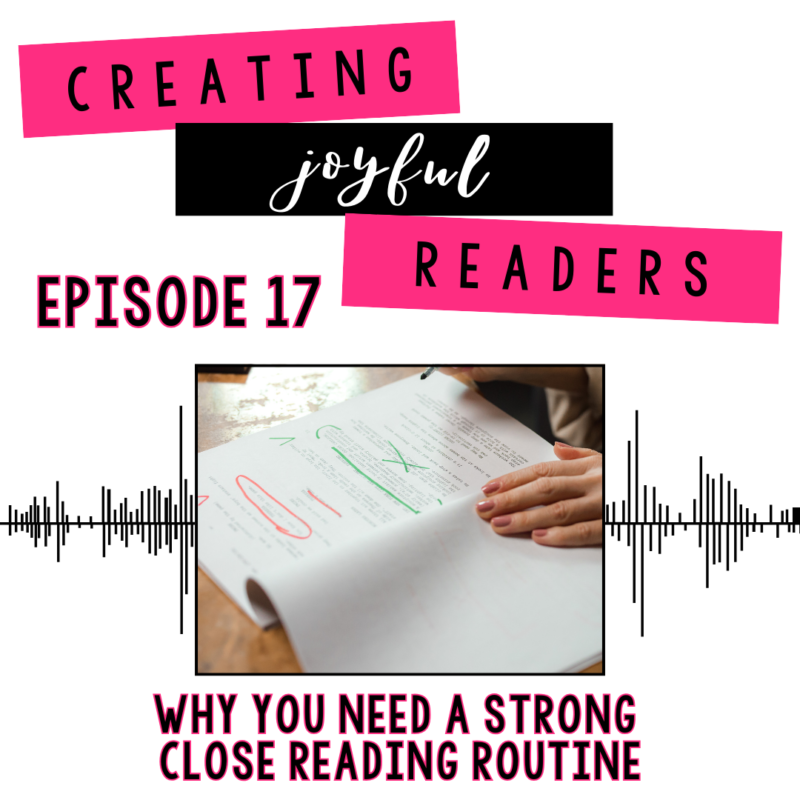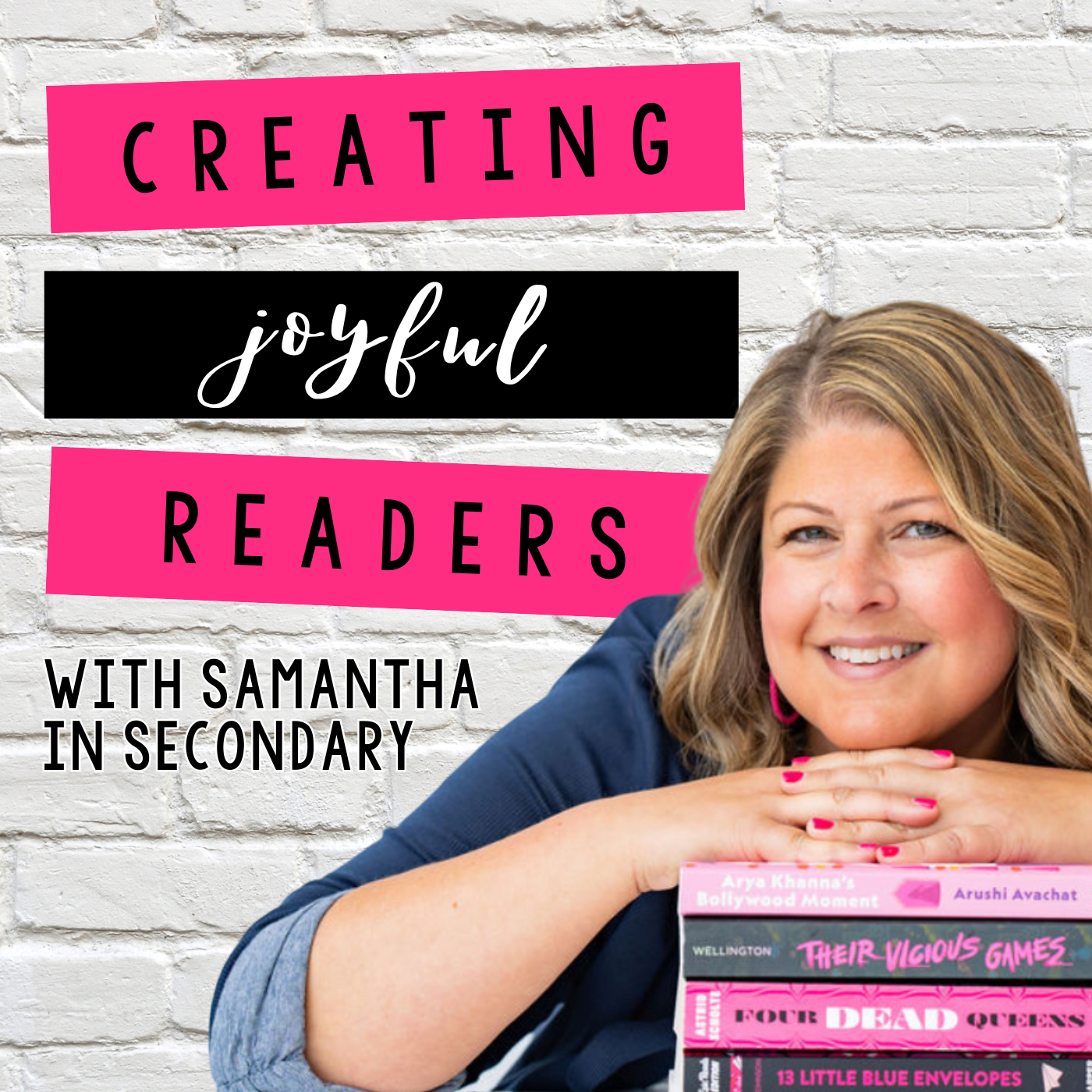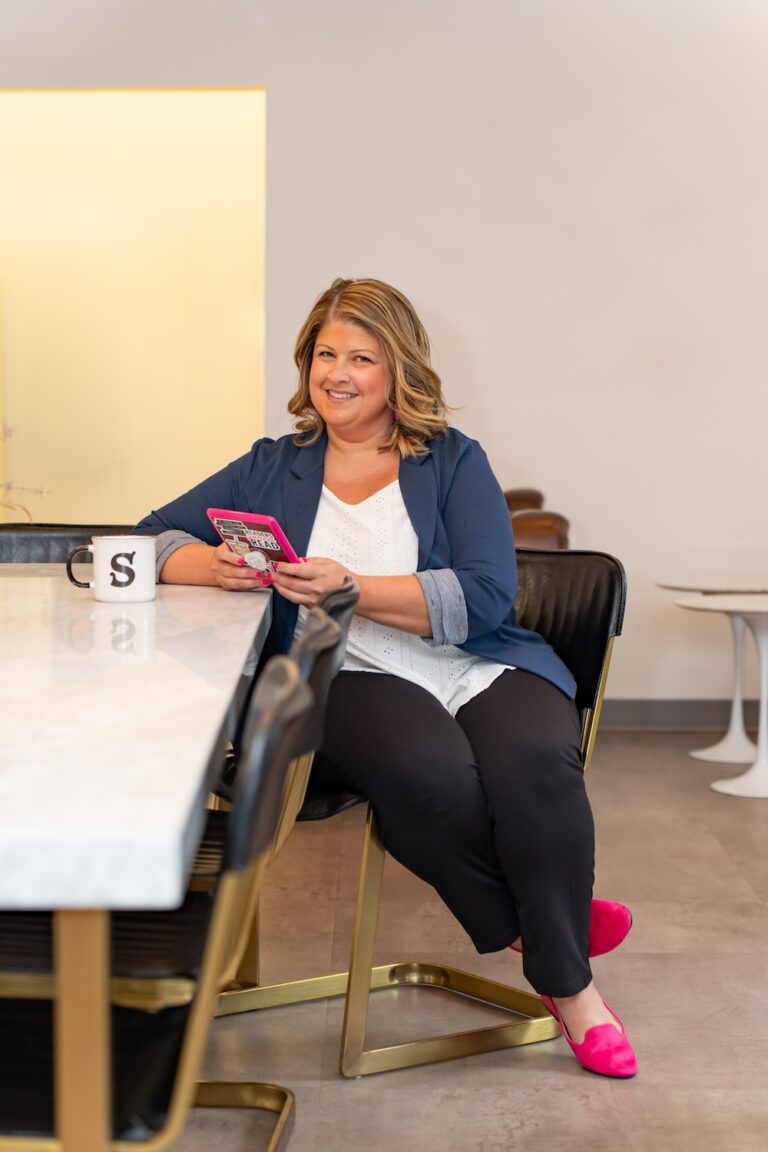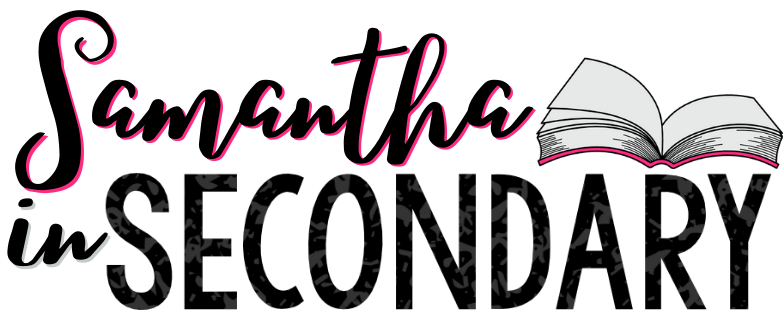Samantha 0:00
Let’s be real. Teaching reading these days can feel so overwhelming, especially when it feels like more and more students are struggling with the basics. And honestly, reading isn’t joyful when it’s hard, right? We all want to share amazing books and do fun, engaging activities to get students excited about reading, but we also can’t forget the importance of those foundational skills. So today, we’re diving into some research about why having a strong, predictable, close reading routine can be a total game changer in your classroom. Trust me, you’re going to want to stick around for this one.
Samantha 0:35
Welcome to Creating Joyful Readers, a podcast dedicated to empowering secondary educators with the tools, strategies, and inspiration to cultivate a lifelong love of reading in their students. I’m your host, Samantha. Tune in each week as we explore the transformative power of independent reading. Delve into the latest research on literacy, dissect projects that will help your students showcase what they’ve learned in a unique way, and share curated recommendations of young adult novels that will captivate and engage your learners. Join in as we embark on a journey to create joyful, lifelong readers one book at a time.
Samantha 1:12
Let’s start off today by defining close reading. What is it? Close reading is all about slowing down and really digging into a text. It’s when you carefully read a passage multiple times to pick up on a deeper meeting key details and the author’s techniques. Instead of just skimming, you’re asking questions, analyzing word choices, and looking for patterns to truly understand what’s going on beneath the surface. It’s kind of like being a detective with words. I started my own teaching journey at an alternative high school in Philadelphia. My students were over aged and under credited, and the public system wasn’t working for them. A lot of them hadn’t been in a traditional school setting for years, and most of them came to us lacking foundational reading skills. Even though I started my career teaching social studies, I knew that teaching basic literacy skills was high on my priority list. I developed the foundation for a close reading system while I was at that school and refined it across a 15 year career split between social studies and ELA. I’m going to detail the how of my system in the next episode, but today I want to focus on why I strongly believe that every teacher should incorporate a predictable close reading routine into their own curriculum.
Samantha 2:17
The National Reading Panel was formed in 1997 at the request of Congress. The panel was put together by the director of the National Institute of Child Health and Human Development at the National Institutes of Health, with input from the US Secretary of Education. It brought together top experts in reading education, psychology, and higher education. Donald Langenberg, from the University of Maryland, served as the chair. In April 2000, the panel wrapped up its work and released a report called teaching children to read. The report covered research on eight key areas of literacy instruction: phonemic awareness, phonics, fluency, vocabulary, text comprehension, independent reading, computer assisted instruction, and teacher professional development. Recommendations from the study are the foundation of best practices in reading instruction today. If your teacher education was anything like mine, you probably feel underprepared to address concerns in many of these key areas. Years ago, it was expected that when students entered the secondary level, they’d know how to read. I’d need a few more episodes to address why this is no longer the case, but suffice it to say that anyone working in education today will tell you that reading proficiency has declined. Today, we’re going to focus on why we need strategies that will help students increase their foundational reading skills. As secondary educators, you may do some work with phonemic awareness, phonics, and fluency, but not nearly as much as you do with vocabulary and text comprehension. So we’re going to focus on those two sections today, which are summarized in chapter four of the study. I’ll drop a link to it in the show notes if you’re interested in checking it out for yourself. I’m discussing this study today because it explicitly details the types of activities that should be included in your close reading routine. Including evidence based practices in a predictable routine will help students get repeated exposure to the kinds of literacy tasks that are going to move the needle for them in their reading development. When reading gets easier for them, they’re more likely to actually enjoy it, and the more they read, the more they’ll realize how amazing it is, which, of course, helps us create joyful readers.
Samantha 2:18
We all know that vocabulary is key when it comes to reading, but why is it so important? The study found that teaching vocabulary directly improves overall text comprehension. It’s not just about exposing students to new words once. They need repeated exposure for it to really stick. Pre-teaching vocabulary before students dive into a text is super helpful too. Even making small changes like swapping out harder words for easier ones, could boost vocabulary learning and make the text easier to understand. Helpful teaching tasks would include creating word walls, pre-teaching vocabulary with an active task, such as graphic representation or hypertext, or having students self select words and then write a synonym next to it for an easier read through in the future. These activities are in alignment with the study’s suggested methodology and my close reading system includes a self selection process as well.
Samantha 2:18
Next, let’s talk about reading comprehension. Reading comprehension can be defined as intentional thinking, during which meaning is constructed through interactions between text and reader. According to the 1993 book Teaching Them to Read by Dolores Durkin, reading comprehension happens when a reader actively engages with a text, using their thinking and problem solving skills to make meaning. The understanding of the text is shaped by both the content and the reader’s prior knowledge and experiences. After analyzing 203 studies on text comprehension instruction, researchers identified 16 effective strategies, with eight being the most promising for classroom use. These include teaching students to monitor their own understanding as they read, working together in cooperative learning groups, using graphic organizers to map out ideas, breaking down story structure with key questions, answering teacher posed questions, generating their own questions, summarizing key points, and using multiple strategies flexibly in a natural classroom setting. My close reading process, which we’ll talk about the next episode, includes two of these strategies built into the structure.
Samantha 2:18
So we’ve reviewed the value of including evidence based practices in your close reading process. Now I want to put it all together and give you several reasons why you need to include these practices regularly in a predictable close reading routine. First, routine reading builds confidence. Giving students scaffolded texts with proven strategies over the course of a school year can help them eventually tackle more complex texts without being overwhelmed. Next, having a clear system with consistent strategies takes the guesswork out of close reading and allows students to spend their time learning how to dissect the text and deepen understanding. Instead of constantly having to relearn the system, use the same system. Every time you complete a close reading task, your students will be able to practice it until it becomes second nature, and then they would naturally use the strategies when the text gets more difficult. Once students master the close reading process, they can apply it independently to any text, empowering them to become more self sufficient readers and thinkers. Last, having a close reading routine fosters a love of reading by making the process engaging and rewarding. When students regularly practice close reading, they start to appreciate the nuances of the text and discover the joy in analyzing stories and ideas. This not only enhances their comprehension skills, but also helps them develop a genuine interest in reading, which can lead to a lifelong love of literature.
Samantha 2:18
Today, we explored the power of a strong, predictable, close reading routine in your classroom and why it’s essential for students to success. We kicked things off by defining close reading as a deep dive into text, like being a detective, where every detail counts. Then we took a look at key findings from the National Reading Panel, which highlighted how consistent evidence based practices can significantly boost vocabulary and text comprehension. We talked about how repeated exposure to vocabulary is vital, along with pre teaching techniques that make learning new words more effective. Finally, we discussed various comprehension strategies in the importance of having a routine that builds confidence, takes the guesswork out of reading and ultimately fosters a love of literature in students by engaging with text in a structured way. We’re not just teaching them to read, we’re helping them discover the joy of reading one page at a time. Next week, I’m going to walk you through my tried and true close reading process that I developed over a 15 year teaching career. It’s one of the main strategies that helped me feel confident that I was helping students move the needle on their own reading progress. Make sure you meet me here next Monday for that episode. It’s going to be a good one. Thanks for tuning in. Be sure to check the show notes for links and resources, and let’s keep creating joyful readers together. Happy reading.
Samantha 2:18
Thanks for tuning in to creating joyful readers, I hope you found inspiration and practical strategies to ignite a passion for reading in your students. Remember every book we introduce and every reading experience we foster can transform lives and help students become lifelong readers. Follow me on social media at Samantha in Secondary for more tips book recommendations and to connect with a community of educators dedicated to making reading a joyful journey. Until next time, happy reading.







